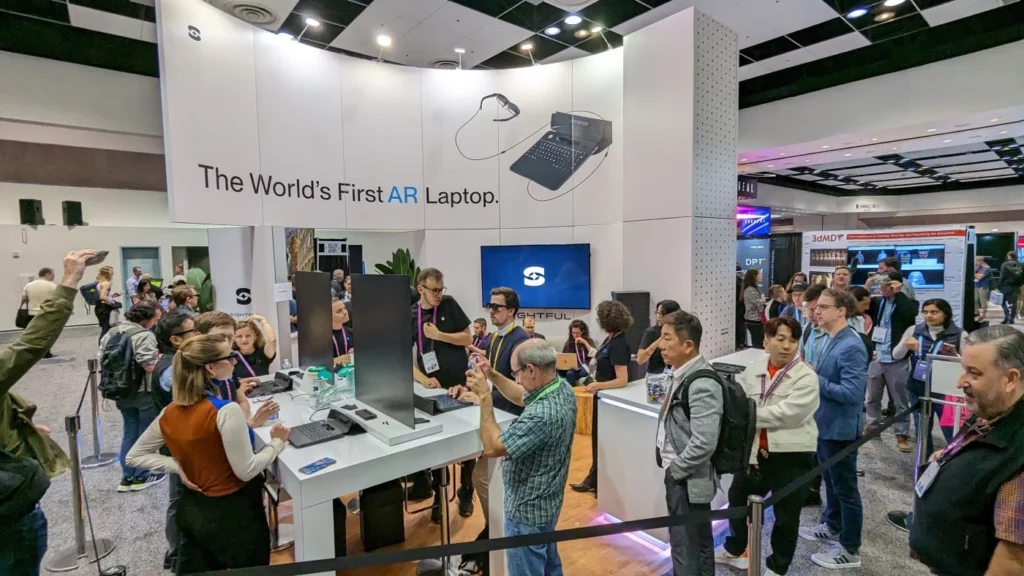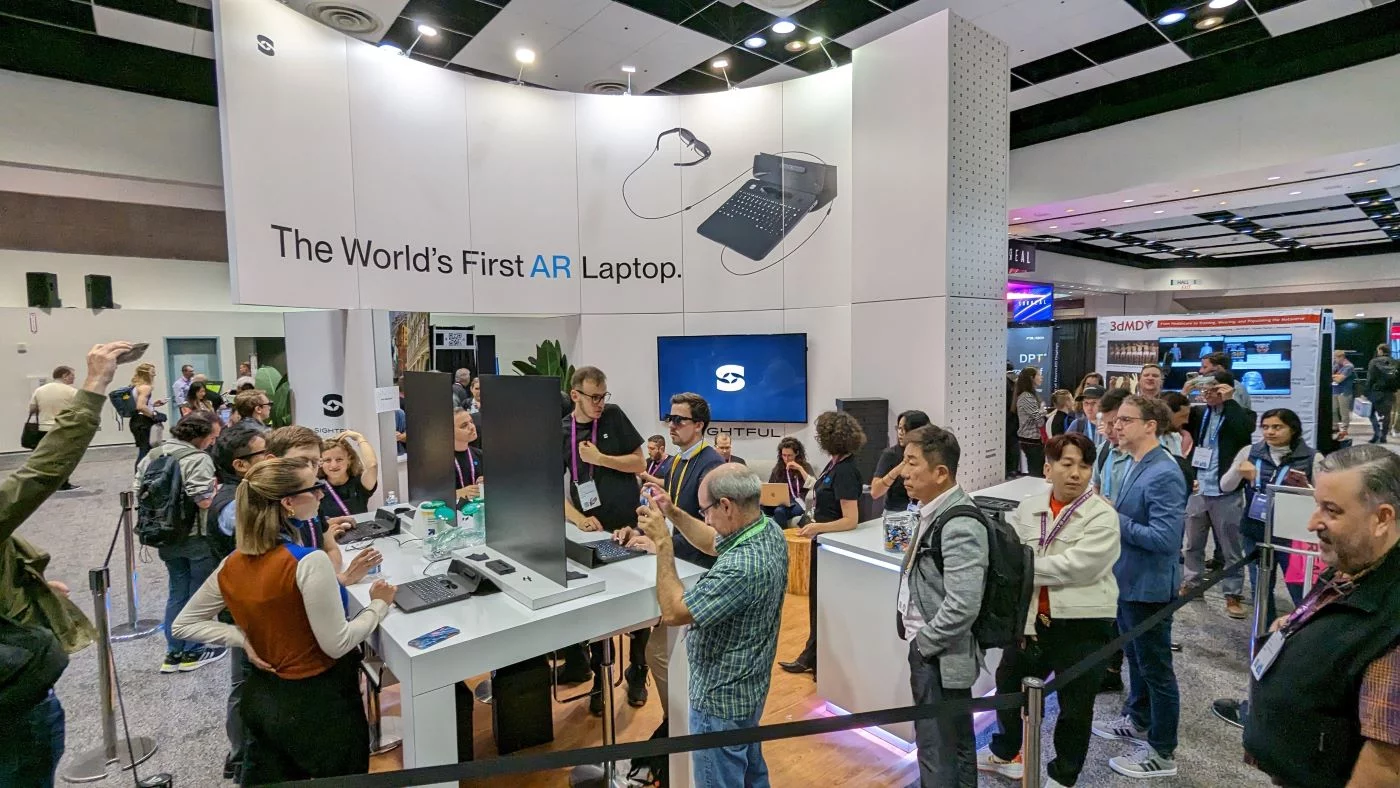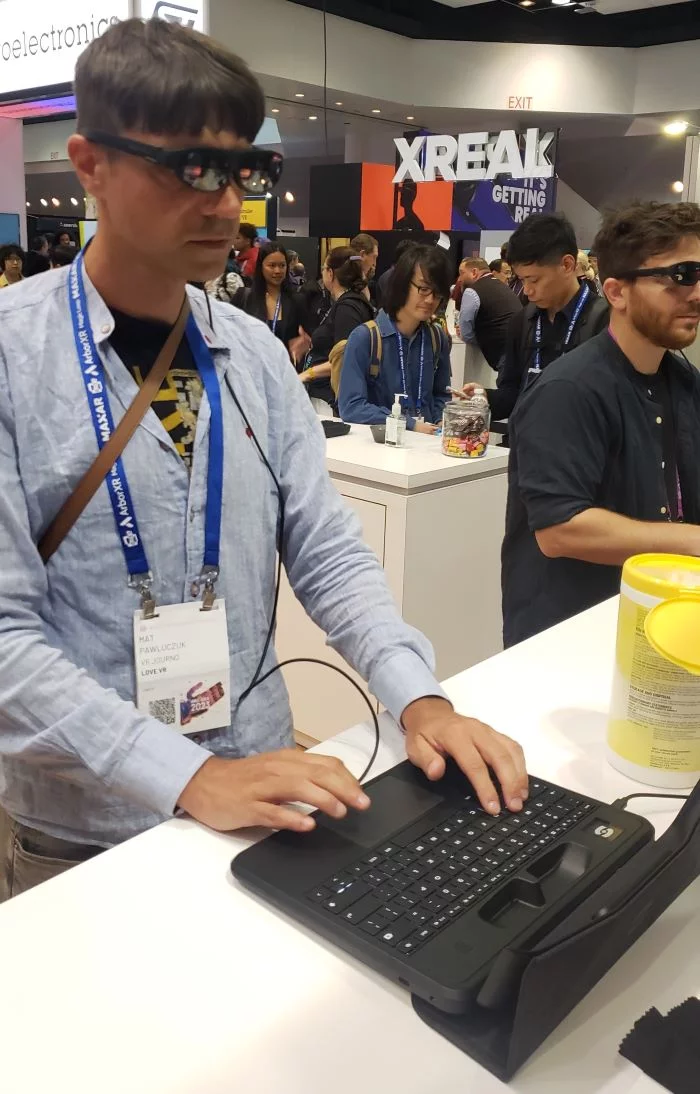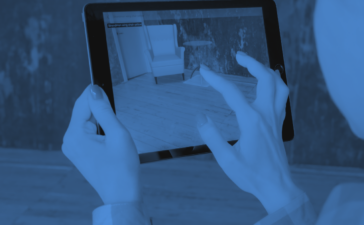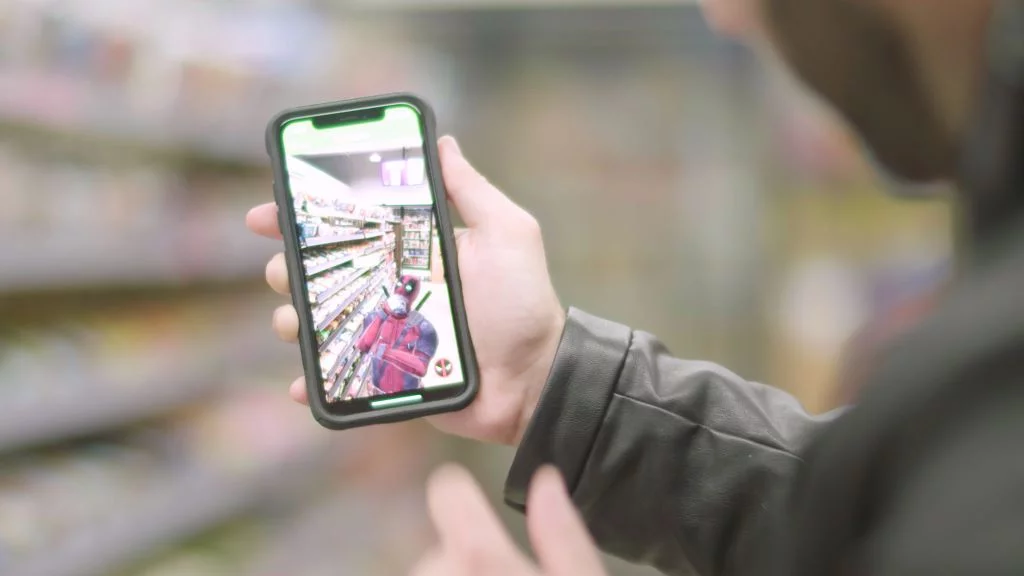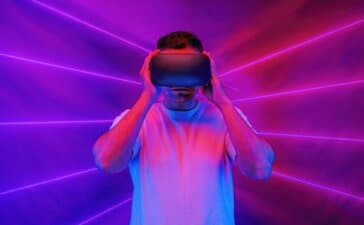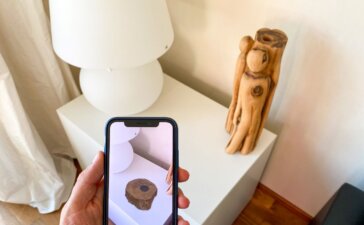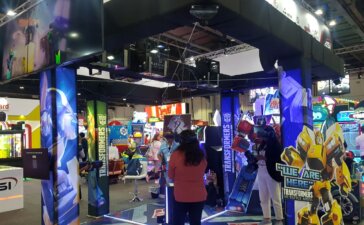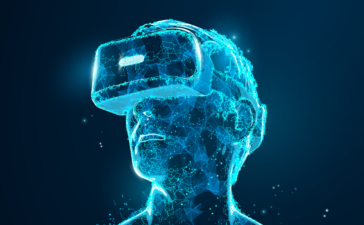Highlighting the Top 3 XR Trends of 2023 [Insights From This Year’s AWE USA]
The 2023 edition of AWE USA not only lived up to its reputation but also reached new heights, reportedly marking its largest event to date. From cutting-edge hardware to new, groundbreaking technology and software solutions, this year had it all.
3 Trends That Will Shape the Future of XR
Let’s dive in and explore the main three trends that stood out and are bound to shape the narrative for the future of XR.
Main Focus on AR
There was a lot of discussion this year about artificial intelligence and how it will enable XR rather than replace it. Just like with the metaverse last year, AI became a new hot topic, but in terms of hardware, the spotlight was clearly on AR.
There were, of course, some notable VR-first devices presented: Lenovo announced their new ThinkReality VRX headset, which is now available for purchase ($1,299). I had a chance to give it a try and was impressed with its large sweet spot, visual clarity, and a high degree of comfort. The headset includes a cooling system that takes the heat away from your face and makes the inside feel almost air-conditioned.
![Highlighting the Top 3 XR Trends of 2023 [Insights From This Year's AWE USA] ThinkReality VRX](https://assets.arpost.co/wp-content/uploads/2023/07/27105020/ThinkReality-VRX-jpg.webp)
HTC presented their modular HTC Vive XR Elite ($1,099) for which they had won a “Best Headworn Device” award. It can be worn both like a traditional headset with a head strap or akin to glasses with an external power source instead of the battery in the back. In detached form, the Vive XR Elite weighs only 270 grams.
These devices were more of an exception rather than the rule, however, and pale in comparison to the amount of AR devices showcased this year. Just on the main floor, we had Vuzix promoting their Ultralite turnkey AR solution, Sightful with a screenless Spacetop AR laptop, XREAL presenting XREAL Air glasses, and Magic Leap returning with Magic Leap 2. Right next to those was C-Real with their unique light field display and Tilt Five. In the lobby, Zappar was demonstrating its $75 Cardboard-inspired device.
And that’s just the hardware, the list doesn’t include smartphone-based solutions like Snapchat’s SnapAR and Snap Lenses or Ffface.me digital clothing. Many software providers were experimenting with AR as well. Whether it was enterprise and training applications or entertainment like a laser-tag-inspired Laser Limbo, the focus on augmented reality was prevalent.
![Highlighting the Top 3 XR Trends of 2023 [Insights From This Year's AWE USA] Laser-tag-inspired Laser Limbo](https://assets.arpost.co/wp-content/uploads/2023/07/27104947/Laser-tag-inspired-Laser-Limbo-jpg.webp)
Subjectively, I found the XREAL and Tilt Five glasses to be the most promising choices in terms of their usefulness and affordability. Tilt Five ($359) offers six degrees of freedom and a wide 110° field of view, plus a whole range of tabletop applications and games. It also comes with a tracked controller.
![Highlighting the Top 3 XR Trends of 2023 [Insights From This Year's AWE USA] Tilt Five](https://assets.arpost.co/wp-content/uploads/2023/07/27105033/Tilt-Five-jpg.webp)
The XREAL Air ($488 with XReal Beam) might only have three degrees of freedom and a smaller FOV of 46°, but makes up for it with its versatility. It weighs only 79 grams and is compatible with phones, consoles, and laptops. Almost any device with a screen can be beamed into the glasses. For those looking to start experimenting with AR, both offer a good and inexpensive entry point.
The Renaissance of Haptics
It was hard to ignore the sheer volume of haptic-related products at AWE. There was a surge of novel startups and original concepts along with many industry veterans returning to show off their latest progress.
I did not expect haptics to have such a strong showing and was positively taken aback. Bhaptics were busy presenting their new TactGlove and Contact CI came out with a new product called Maestro. The most established player in the space, HaptX, was there as well.
Among newer entrants, SenseGlove was celebrating their €3.25M Series A funding with a newly updated Nova 2 haptic glove. Weart demoed their TouchDIVER glove capable of not only feedback but also temperature variations, while OWO showed off their latest haptic vest that uses electrical impulses to simulate sensations. Fluid Reality stole the show with its electroosmotic device that uses an electric field to create feedback.
![Highlighting the Top 3 XR Trends of 2023 [Insights From This Year's AWE USA] Fluid Reality](https://assets.arpost.co/wp-content/uploads/2023/07/27104854/Fluid-Reality.png)
There were too many to list but even this short rundown underscores how noticeable haptics were this year. Most of these products target industrial and business markets, with the notable exceptions being the OWO vest ($499) and Bhaptics (also $499). Both devices have their strengths and weaknesses, though I have to give extra points to OWO for taking a bold, unique approach and allowing users to configure the vest so that it can simulate discomfort as well as other unpleasant feedback. This can result in a significantly more visceral experience and a heightened feeling of presence that’s hard to replicate using other methods.
![Highlighting the Top 3 XR Trends of 2023 [Insights From This Year's AWE USA] OWO Haptic Vest](https://assets.arpost.co/wp-content/uploads/2023/07/27105006/OWO-Haptic-Vest-jpg.webp)
Seeing all the new and creative ways to model and recreate tactile data left me impressed with what’s to come, but at the same time, underwhelmed with the more conventional approaches.
Full resistance feedback, which restricts your movement, felt detached and did not properly mirror what I was seeing inside the headset. That was the case for both SenseGlove Nova and the high-end HaptX.
Their feedback, while indeed powerful, felt very mechanical and arbitrary. There are two paradigms here at play, one is trying to nail the fidelity but approximate the sensation, while the other one is trying to provide the exact, realistic sensation at the cost of fidelity.
New Optics Solutions Are Coming
There were a number of booths dealing with optics and display solutions this year. It’s possible the latest push into AR helped supercharge this progress in optics. Many booths had some kind of developer kit or proof-of-concept ready. Visitors would come and literally peer into the future through these stationary prototypes.
One example was Ant Reality demonstrating their mixed waveguide solution called Crossfire. While the displays (ranging in field of view from 56° to 120°) were impressive, what made them unique was their ability to do both AR and VR. At a press of a button, the surroundings would go completely dark, turning the augmented overlay into an immersive experience. Magic Leap 2 is known for offering what is called segmented dimming, but in the case of the Crossfire, the glasses would become completely opaque despite the AWE show floor being exceptionally bright.
![Highlighting the Top 3 XR Trends of 2023 [Insights From This Year's AWE USA] Ant Display demonstrating their prototypes](https://assets.arpost.co/wp-content/uploads/2023/07/27104738/Ant-Display-demonstrating-their-prototypes-jpg.webp)
Another never-before-achieved breakthrough was a light field display incorporated into an AR headset, courtesy of CREAL. Light field displays promise to solve a lot of issues, the most common one being correct focal depth. Harnessing the direction of light can produce outstanding results, but shrinking light field tech to fit into a glasses form factor still proves tricky. CREAL’s headset is an important, pioneering step in this field.
![Highlighting the Top 3 XR Trends of 2023 [Insights From This Year's AWE USA] CREAL’s LFD headset](https://assets.arpost.co/wp-content/uploads/2023/07/27104815/CREALs-LFD-headset.png)
Another interesting innovation came from a company called Hypervision. Their claim to fame is their ultra-wide display capable of achieving a human vision 240° field of view. To make this happen, Hypervision used not one, not two, but four pancake lenses. Vertically, the screen has 95° so it doesn’t quite match the human eye top to bottom, but horizontally there’s full peripheral vision. While the stitching between the screens was slightly perceptible, the ability to achieve human FOV in such a small form factor is a massive step forward.
![Highlighting the Top 3 XR Trends of 2023 [Insights From This Year's AWE USA] Hypervision](https://assets.arpost.co/wp-content/uploads/2023/07/27104923/Hypervision-jpg.webp)
Overall, this means that the future generations of XR devices will have access to a wide variety of new, next-gen optics and display solutions, most of which are not even known to the general public. Display tech doesn’t follow Moore’s Law so it’s always difficult to make any specific predictions, but there’s clearly no stagnation in the field and some of the breakthroughs we saw this year are truly exciting.
Closing Thoughts
These are just some of the main trends and shifts we saw this year. There was a notable increase in 3D spatial display panels, such as Leia Lume Pad 2, Sony’s Spatial Display, Looking Glass, and a human-sized holographic box by ARHT.
This forms part of a larger trend of broadening the definition of spatial computing, which is sometimes expanded to include other real-world tools and technologies like visualizations, projection mapping, and 3D screens.
What also caught my eye was a noticeable reduction in locomotion solutions. Gone are the days of omnidirectional treadmills or big simulator seats. The only two exceptions were the unconventional EXIT SUIT, which suspends the wearer slightly above the ground allowing them to run in the air, sit, fly, and do a range of other motions (for which the team had won this year “AWEsome” award) and the Freeaim shoes that act like rollers, pushing the wearer backward as they walk.
This was the last AWE hosted in Santa Clara. From next year on, the event is moving to the Long Beach Convention Center. This shift to a new, bigger venue highlights the constant growth of the XR space and that’s one trend that speaks for itself.
Guest Post
About the Guest Author(s)

Mat Pawluczuk
Mat Pawluczuk is an XR / VR writer and content creator.
Highlighting the Top 3 XR Trends of 2023 [Insights From This Year’s AWE USA] Read More »
![highlighting-the-top-3-xr-trends-of-2023-[insights-from-this-year’s-awe-usa]](https://theverysoon.com/wp-content/uploads/2023/08/79832-highlighting-the-top-3-xr-trends-of-2023-insights-from-this-years-awe-usa-1024x576.webp)
